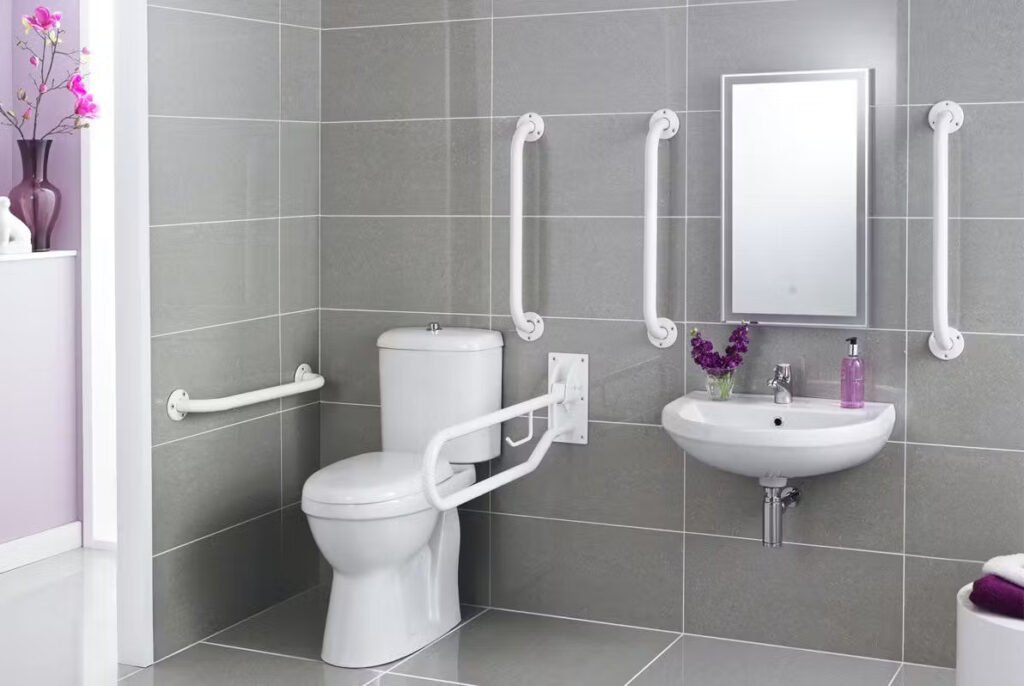
As society advances and awareness of human rights grows, “accessibility” has become a hallmark of modern communities. Improving the quality of life for people with disabilities relies heavily on the development and popularization of barrier-free facilities. Among these, specialized toilets for individuals with disabilities—commonly known as accessible or disabled toilets—are indispensable. They serve as a vital aspect of creating inclusive environments, ensuring dignity, safety, and independence.
1. What Are Disabled Toilets?
Disabled toilets—also called accessible or barrier-free toilets—are specially designed sanitary fixtures tailored for individuals with mobility challenges or other disabilities. Unlike standard toilets, they emphasize safety, ease of use, and comfort, considering users’ specific needs. Their core purpose is to enable people with diverse disabilities to perform toileting independently, maintaining dignity and health, and embodying the spirit of universal accessibility.
2. Design Features of Disabled Toilets
Designing effective disabled toilets requires attention to safety, comfort, and flexibility. Key features include:
Elevated Height: Usually 5-10 cm higher than regular toilets to facilitate easier sitting and standing, reducing strain on joints.
Spacious Interior: Ample space for wheelchair maneuvering, with enough clearance for transfer transfers.
Supportive Handrails: Robust grab bars on both sides, providing stability during sitting and standing, reducing fall risks.
Easy-to-Clean Surfaces: Simplified, anti-bacterial surfaces for hygienic maintenance.
Additional Amenities: Some include automatic flush systems, heated seats, bidet functions, deodorization, and voice activation for enhanced comfort and hygiene.
Safety Features: Non-slip mats, soft-close lids, and shock-absorbing bumpers to prevent falls and injuries.
3. The Importance of Disabled Toilets
Accessible toilets are more than mere fixtures—they are fundamental for respecting human dignity and social equity. Their significance manifests in:
Promoting Autonomy: Allowing individuals with disabilities to perform personal hygiene independently, reducing dependency.
Upholding Dignity: Respecting personal rights and fostering confidence, especially important during social outings.
Enhancing Social Inclusion: Removing physical barriers that hinder participation in community activities, fostering equality.
Legal Compliance: Many countries have laws mandating accessible facilities in public buildings and spaces, making their installation a legal necessity.
4. Usage Scenarios
Disabled toilets are essential across various environments:
Private Residences: Offering convenience for family members or guests with mobility challenges.
Public Facilities: Airports, train stations, malls, hospitals, schools, and other public venues where accessible toilets ensure equitable access.
Specialized Institutions: Care homes, rehabilitation centers, and disability support facilities providing tailored hygiene solutions.
5. Future Trends in Disabled Toilet Development
Advancements in technology and societal awareness point towards promising future directions:
Smart Technology: Integration of sensors, remote controls, and IoT features for seamless operation, monitoring, and maintenance.
Eco-Friendly Designs: Water-saving systems, biodegradable materials, and energy-efficient components to reduce environmental impact.
User-Centric Customization: Modular and adaptable designs to cater to various disabilities, including visual, hearing, or cognitive impairments.
Multi-Functional Products: Combining toilet functions with washing, drying, sterilizing, and air purification for comprehensive hygiene.
Inclusive Policies and Education: Widespread promotion of awareness and mandatory standards to ensure universal accessibility.
6. Social Initiatives and Call for Action
Creating an accessible society demands collective effort:
Policy Support: Governments should formulate and enforce regulations requiring barrier-free facilities and provide funding or incentives.
Innovative Companies: Enterprises must prioritize inclusive design, producing compliant and affordable solutions.
Public Awareness: Educational campaigns should foster understanding and empathy, encouraging inclusive attitudes.
Community Engagement: Involving disabled users in the design process ensures products address real needs.
Conclusion
Disabled toilets symbolize society’s commitment to inclusivity and respect for all citizens. They play an essential role in safeguarding dignity, promoting independence, and paving the way toward a more equitable society. Building accessible environments requires not just physical infrastructure but also societal awareness and action.
Let’s work together to create spaces where everyone, regardless of physical ability, can enjoy equal access, comfort, and dignity. Accessibility begins with attention to the smallest details—start with a barrier-free toilet.



